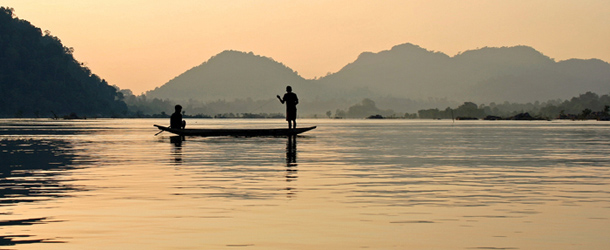In the last decade, it seems that south-east Asia is finally going through something of an identity crisis.
It’s strange to welcome it, I know, but if you’ve ever been tempted into researching a journey along the Mekong River, you’ve no doubt read the word ‘mystique’ over 500 times, drowned in a sea of monument pictures, and been told about the authenticity of this region until the cows have come home, had a light supper, then left home again.
Why the bitterness? I hear you cry. I’ll be the first to admit, the culture is rich, the history is intriguing, and the ancient monuments are breathtaking. But it’s not the only thing that makes the cities in south-east Asia – and those upon the banks of the Mekong River in particular – such a treat to explore.
 The modern face of the Mekong River is flourishing, even in cities which are thousands of years old. To call the culture one of two halves is poetic to be sure, but it implies that the history and the fast-paced thrills are separate. The reality is very different.
The modern face of the Mekong River is flourishing, even in cities which are thousands of years old. To call the culture one of two halves is poetic to be sure, but it implies that the history and the fast-paced thrills are separate. The reality is very different.
The wonderful thing about the Mekong River is the diversity of sights, sounds and tastes, especially when the old and new collide.
To see scooters weaving their way through the narrow streets surrounding Hanoi’s temples may seem ridiculous at first, but the strange truth is this: the contemporary might encroach on the culture and people of these indomitable cities, but never upon the heritage. Whether it’s French colonial stone or the lush water of rice paddies, you won’t be seeing these icons upon the banks of the Mekong River demolished for the sake of shopping malls and skyscrapers.
Vietnam is no stranger to courting history, and if you needed an example of how the youthful flourish in a country so indebted to its past, then look no further than Ho Chi Minh City. Hanoi might be the heart of the government, but this has long been the centre of the economy – and it shows.
The gorgeously detailed spires of pagodas provide a backdrop to District 1 – home to coffee shops awash with neon until dawn and fashionable bankers toting Saville Row suits filling the booths of intimate bars.
On the way through this shining example of the dynamic, booming economy Vietnam has cultivated, you’ll more than likely end up alongside the Notre Dame church and Ben Thanh market – symbols of the old Vietnam effortlessly embraced by the new.
Sharing both the Mekong River, and a boon in youthful population with Vietnam, Cambodia is also undergoing rapid changes that have transformed its culture. The town of Siem Reap, for example, was once considered simply a gateway to the Angkor Archaeological Park, the most visited attraction in the entire country. This once tiny village is now the quickest developing region in the whole of Cambodia; enchanting tourists who at first intend to hitch a ride towards the slopes of Angkor.
Around the French colonial architecture, a colourful community has blossomed, bringing intimate restaurants, irresistible nightspots and a cacophony of teenagers touring the streets on motorbikes of all shapes, colours, and sizes.
Chances are they’ll be heading towards Pub Street, the most famous boulevard in all of Siem Reap. At dusk, the street is blocked off from traffic, and mobs of food vendors appear to spring up from nowhere, selling everything from honey-roasted crickets to sugar-coated donuts.
As beguiling as the alleyways of Siem Reap are, the road to Angkor Wat is well-travelled for a  reason. It’s easy to decry the image of the historical tourist trap south-east Asia has long been considered, yet it’s undeniable how powerful the sight of its most iconic monuments really is.
reason. It’s easy to decry the image of the historical tourist trap south-east Asia has long been considered, yet it’s undeniable how powerful the sight of its most iconic monuments really is.
The image of Angkor Wat temple reflected upon the languid waters of a lagoon, the red towers of Pre Rup and the towering gaze of statues of Vishnu arrayed in legions around the archaeological park.
The early Angkor temples were originally Hindu, but Jayavarman VII (the king of the Khmer empire) converted to Mahayana Buddhism and set about building Buddhist statues and monuments alongside the Hindu shrines. In much the same way, the banks of the Mekong adapt to the changes without compromising the past. A trip down the Mekong leads on an unmissable journey into a region which is an incomparable of always preserving the old, but never failing to ring in the new.



